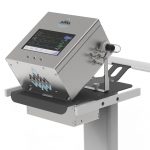From Gizmodo, May 5, 2020: Fermilab scientist Brian Nord weighs in on the question of how automated devices, such as an autonomously operating telescope, free from human biases and complications, could find the solutions to questions about dark matter and dark energy.
News
From Gizmodo, May 4, 2020: Fermilab’s Muon g-2 experiment is featured in this piece on today’s biggest discoveries in physics, which come from huge collaborations of scientists working on enormous apparatuses.
From NCTV17, May 4, 2020: Fermilab’s Michael Pfaff is interviewed in this one-minute video segment about the newest addition to the Fermilab bison herd
From Argonne National Laboratory, May 5, 2020: Using Argonne’s supercomputer Mira, researchers have come up with newly precise calculations aimed at understanding a key gap between physics theory and measurements by the Muon g-2 experiment
From MVM collaboration, May 5, 2020: The Mechanical Ventilator Milano is an innovative ventilator, conceived and designed by an international collaboration of particle physicists and developed in cooperation with other relevant scientific communities. Its mechanical design is simple, using a small number of parts to facilitate rapid production. Fermilab scientists volunteered their time to design, test and finalize the MVM.
From Live Science, May 1, 2020: A group of researchers at Fermilab has worked with high-school teachers to develop a program to train their students in the emerging field of quantum computing.
The detector for the international Deep Underground Neutrino Experiment will collect massive amounts of data from star-born and terrestrial neutrinos. A single supernova burst could provide as much as 100 terabytes of data. A worldwide network of computers will provide the infrastructure and bandwidth to help store and analyze it. Using artificial intelligence and machine learning, scientists are writing software to mine the data – to better understand supernovae and the evolution of our universe.
From Live Science, April 29, 2020: One of the deepest mysteries in physics could be explained by a long-since vanished form of dark matter. Fermilab scientist Dan Hooper is one of the authors of the new result. If an ancient form of dark matter decayed out of existence, that loss would have decreased the mass of the universe, which would have led to less gravity holding the universe together, which would have affected the speed at which the universe expands — helping explain the disagreement between measurements of the universe’s expansion.



